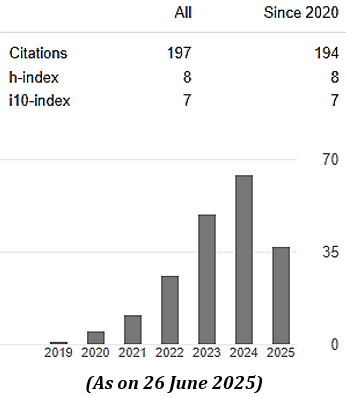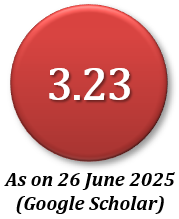Reviewer Guidelines
INTRODUCTORY
The primary objective of peer review is to ascertain whether a submitted manuscript is worth publishing. Secondly, to improve the quality of a manuscript that is going to be published. Peer review is a time-consuming job, but is an essential step to assure the quality of scientific journals. The team of MIST International Journal of Science and Technology (MIJST) management is deeply indebted to you for your time that you are going to spend in reviewing the given manuscript.
MIJST adheres to the Committee on Publication Ethics (COPE) Code of Conduct and Best Practice Guidelines (http://publicationethics.org). We strive to ensure that peer review is fair, unbiased and timely. Decisions to accept or reject a manuscript for publication are based on the manuscript’s relevance to the scope of the journal, its importance, originality and clarity.
MIJST has a database of potential reviewers, which is updated regularly based on personal connections of editorial board members, author suggestions and bibliographic databases. Reviewers’ evaluations play a major role in our decision as to whether to accept or reject a manuscript for publication.
MIJST operates on a double-blind review process in which the identities of the authors are hidden from the reviewers, and identities of the reviewers are hidden from the authors. Reviewers can choose to sign their reviews if they wish.
GENERAL GUIDELINES
- Reviews should be conducted fairly and objectively. Personal criticism of the author is inappropriate. If the research reported in the manuscript is flawed, criticize the science, not the scientist. Personal criticism is likely to lead an author to ignore useful comments, making your review less useful to your field. Criticisms should be objective, not merely differences of opinion, and intended to help the author improve his or her paper.
- You should decline to review manuscripts in which you have conflicts of interest resulting from competitive, collaborative, or other relationships or connections with any of the authors, companies, or institutions connected to the papers.
- If your previous or present connection with the author(s) or an author's institution might be construed as creating a conflict of interest, but no actual conflict exists, please include this issue in your confidential comments to the editor. If in doubt, please contact the Section Editor who requested the review before accepting.
- Respect the confidentiality of the manuscript, which is sent to you in confidence. You should not discuss unpublished manuscripts with colleagues or use the information in your own work. If you feel a colleague is more qualified than you to review the paper, do not pass the manuscript on to that person without first requesting permission to do so from the editor. Your review and your recommendation should also be considered confidential.
- If you choose to remain anonymous, ensure that you avoid comments to the authors that might serve as clues to your identity.
COMMENTS TO THE EDITOR
Your Comments to the Editor will be submitted to the Executive Editor and the Editor-in-Chief only. These should include any possible conflicts of interest. Comments and constructive criticism of the manuscript should be placed in the Comments to the Author.
COMMENTS TO THE AUTHOR
Your Comments to the Author will be submitted to the Handling Editor and the Editor-in-Chief. They are also communicated to the authors and to the other anonymous reviewers of the manuscript once the editor has made a decision.
Comments should be constructive and designed to enhance the quality of the manuscript. You should consider yourself to be the authors’ mentor. Make your comments as complete and detailed as possible. Express your views clearly with supporting arguments and references as and when necessary. Include clear opinions about the strengths, weaknesses and relevance of the manuscript, its originality and its importance to the field. Specific comments that cite page and line numbers are most helpful. If you feel unqualified to address certain aspects of the manuscript, please include a statement to identify these areas.
Begin by identifying the major contributions of the paper. Mention its major strengths and weaknesses, and its suitability for publication. Please include both general and specific comments bearing on these questions, and emphasize your most significant points. Support your general comments, positive or negative, with specific evidence.
If you wish to make comments directly on the manuscript pdf using the Note tool, you may do so. However, we do not expect you to copy-edit the manuscript. If you do annotate the pdf, please also include a summary of your general comments. You may also upload other documents (e.g. your review as a document, useful references). The journal editorial assistant will remove your identity from the properties of these documents to maintain your anonymity.
Points to consider in your review include:
- Is the topic of the manuscript appropriate for the Journal? Is the information of significant interest to the broad readership of the Journal?
- Do the title, abstract, key words, introduction, and conclusions accurately and consistently reflect the major point(s) of the paper?
- Is the writing concise, easy to follow, and interesting, without repetition?
- Is the aim clearly stated?
- Are the methods appropriate, scientifically sound, current, and described clearly enough that the work could be repeated by someone else?
- Is the research ethical and have the appropriate approvals/consent been obtained?
- Are appropriate statistical analyses used? Are they sufficiently justified and explained? Are statements of significance justified?
- When results are stated in the text of the paper, are they supported by data? Can you verify them easily by examining tables and figures? Are any of the results counterintuitive?
- Are all tables and figures necessary, clearly labelled, well designed, and readily interpretable? Is information in the tables and figures redundant? Is it repeated in the text?
- Are the conclusions supported by the data presented?
- Are the references cited the most appropriate to support the manuscript? Are citations provided for all assertions of fact not supported by the data in this paper? Are any key citations missing?
- Consider the length of the manuscript, relative to the content. Should any portions of the paper should be expanded, condensed, combined, or deleted? (Please be specific in your advice, and don't simply advise overall shortening by x%).
- Does the manuscript comply with the Instructions for Authors?
Please also comment on any possible research or publication misconduct, such as:
- Does this manuscript report data or conclusions already published or in press? If so, please provide details.
- Has the author plagiarized another publication?
- Is there any indication that the data have been fabricated or inappropriately manipulated?
- Have the authors declared all relevant competing interests?
CORRESPONDANCE WITH THE JOURNAL EDITORIAL MANAGER
Please contact the Section Editor, who assigned you the review task in case you need any clarification on the paper or assistance in conducting the review the manuscript.
















